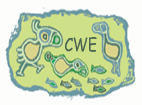|
|
|
 |
Triangle Island Seabird
Research Station
|
|
 |
|
|
|
Seabird Information
|
|
|
|
|
|
|
|
 |
|
As the name implies, seabirds spend most of their lives at sea. They feed from the ocean and rest on the water. Some species of seabirds, like the Tufted Puffin, are very social while at sea, floating in large groups and feeding together, while other species, like the Cassin's Auklet, spend most of their time at sea alone or with one or two other birds. Many species like the auks or alcids have short wings which they use for flight and to propel themselves underwater. |
|
|
| While seabirds spend most of their time at sea, all species must go to land to breed. Many seabirds breed on small and often isolated islands or on rock outcroppings. By breeding in these inhospitable locations, seabirds avoid mammalian predators that could eat their eggs, chicks or even adults. The group that seabirds form when they nest in large congregations is called a colony. There is often limited room at the colony and birds may compete for space so that almost every available surface at a colony may be used by one species or another. There are a number of different nest types that seabirds will build. Many species dig burrows into the soil with their bills and feet and lay their eggs at the end of the burrow. Other species will nest on cliff ledges or on any other flat surface they can find. |
|
|
|
 |
|
|
 |
|
|
| Chick diets may be comprised of many different items. Some seabirds feed primarily on small fish like sand lance or herring and others feed mainly on plankton. |
|
|
|
Our research is concentrated on four different seabirds that breed on Triangle Island: |
|
|
 |
|
 |
|
 |
 |
|
|
|
|
|
|
|
|
|
|
|
|
|
|
|
|
|
|
|
|
|
|
|
|
|
|
|
|
|
|
|
|
|
|







